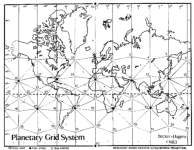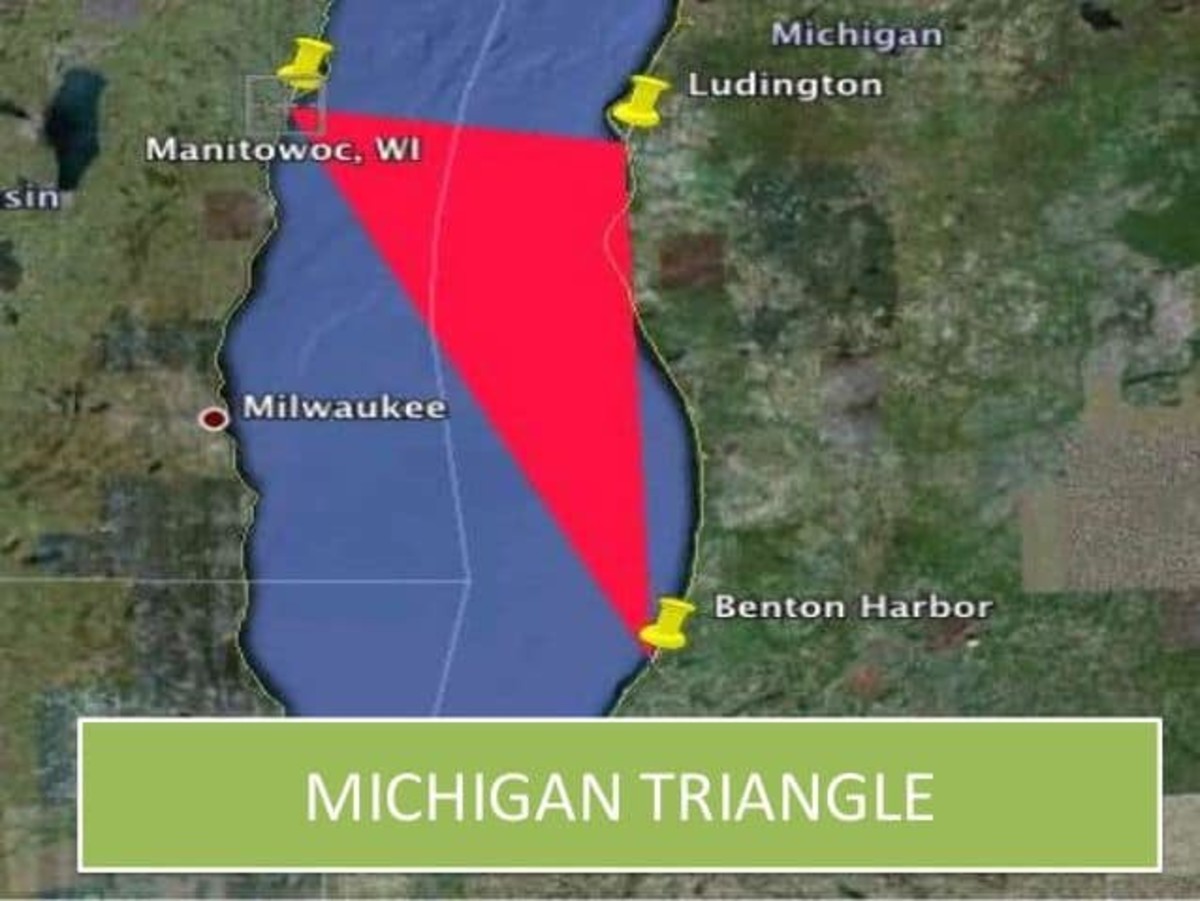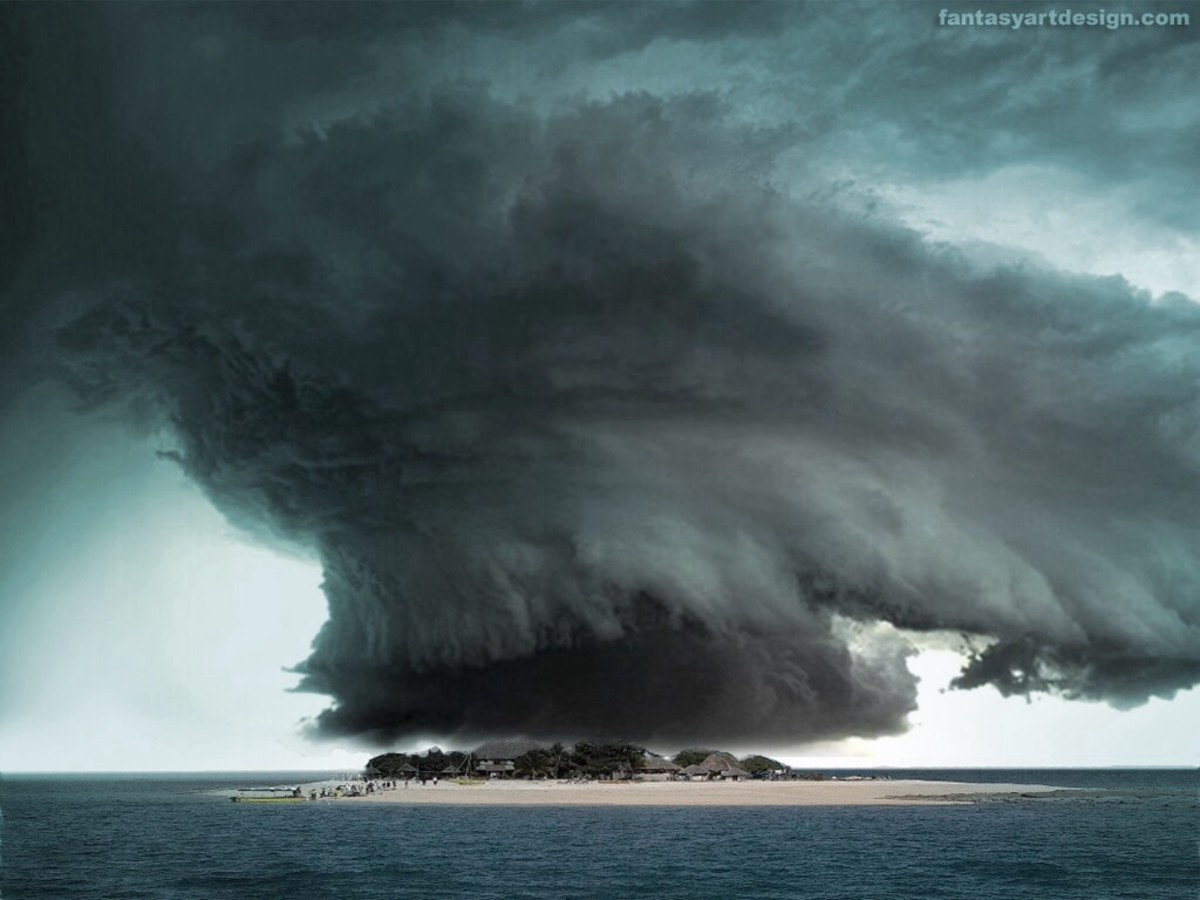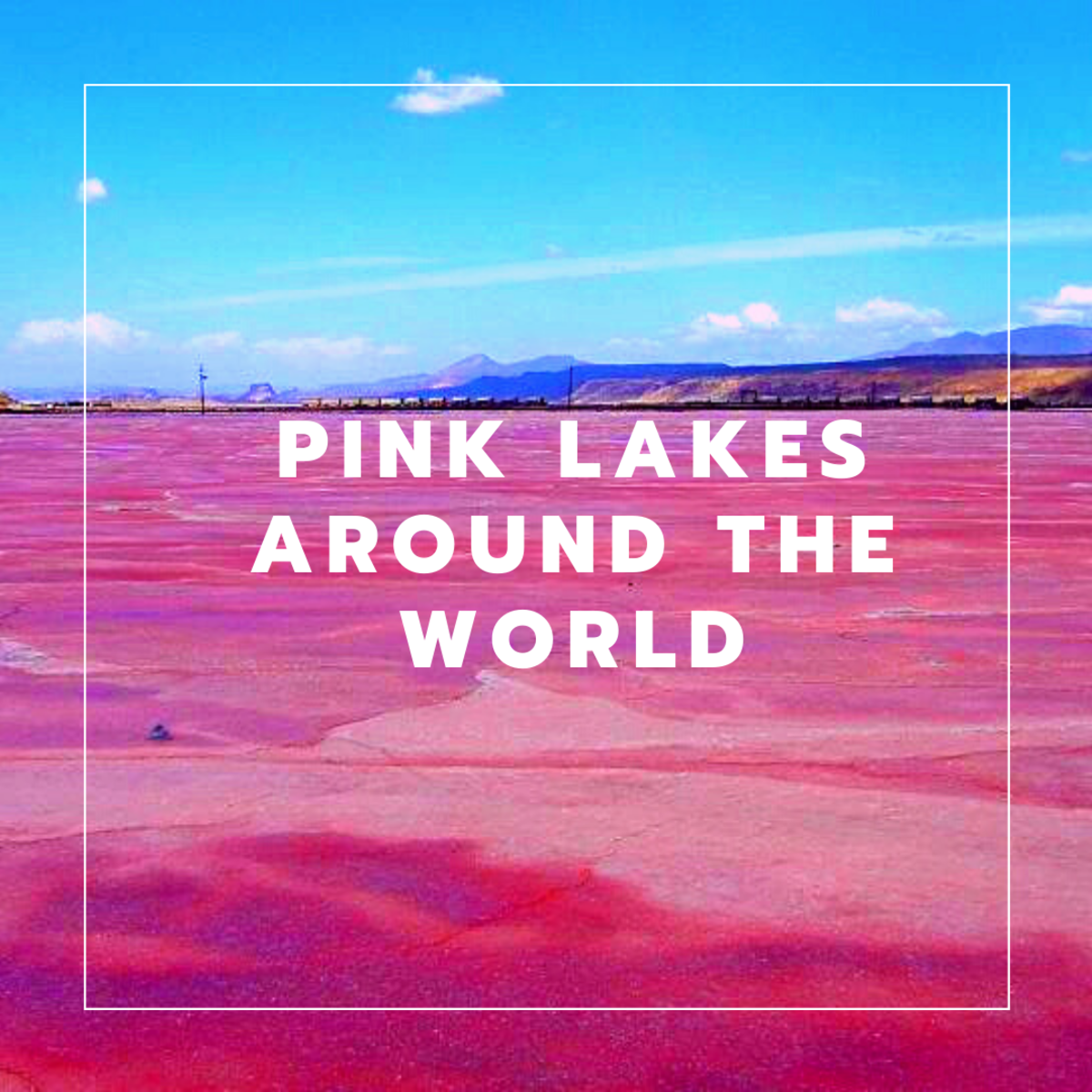Vile Vortices: The Bermuda Triangle is Only the Beginning.
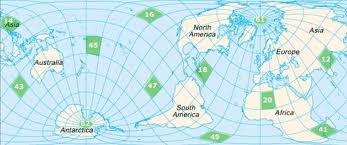
While it is definitely the most renown spot in the world for the unexplained loss of ships and airplanes, the Bermuda Triangle does not own a monopoly on this popular phenomenon. As a matter of fact, one man’s research indicates that the infamous Triangle is simply one point on a world-wide grid of similar locations known as the “Vile Vertices.” Numbering twelve in all, each of these locations distributed evenly throughout the planet are locales where unusually high numbers of aircraft and water vessels meet an untimely (and mysterious) demise.
The man who originally postulated the theory of the Vile Vortices was Ivan T. Sanderson. Sanderson was the founder of The Society for the Investigation of the Unexplained. His group was founded on the principle of investigating any and all mysterious or paranormal phenomena. However, during a period of history when The Bermuda Triangle and the mystifying disappearances associated with it were at the forefront of popular culture, Sanderson became fixated on lost ships and planes while disregarding other mysterious phenomena which might have warranted investigating.
In 1972, Sanderson contributed an article to Saga Magazine entitled: “The Twelve Devil’s Graveyards around the World.” At the time of its publication, Sanderson’s piece generated quite a lot of excitement in the paranormal and naturalist communities. Inside the article, the author first coined the “Vile Vortices” appellation; not just as an alliteration to act as a memory aid (although it does accomplish that) but as a description of what transpires in these locations: Vile – plural of “vili” meaning miserable, and Vortices – plural of “vortici” meaning whirl or vortex. While this meaning is ostensibly simplistic, it does encapsulate the scenario: unique vortexes where misfortune occurs.
After years of personal investigation and statistical research, Sanderson came to realize that there are twelve equidistant locations across the face of the globe, sharing lines of latitude, where unusually high numbers of ships and planes are lost. The three most famous of the twelve spots are: The Bermuda Triangle, The Dragon’s Triangle (aka the Devil’s Sea), and the less-dramatically named South Atlantic Anomaly. The other nine locations are less recognizable—but equally accomplished. All of the locations boast similar ratios of planes and ships that have attempted to traverse their air or water space…and never been heard from again. Remarkably, the twelve locations are equally distributed between the Tropic of Cancer and the Tropic of Capricorn. Vortices in the Tropic of Cancer: Mohenjo Daro, site of the Rama Empire; The Devil’s Sea (Dragon’s Triangle); Hamakulia, near Hawaii, the scene of high volcanic activity; The Bermuda Triangle; The Algerian megalithic ruins; The North Pole. Vortices in the Tropic of Capricorn: The Zimbabwe Megaliths; Wharton Basin, the site of the Wallaby Fracture Zone; The edge of the Hebrides Trench near the Fiji Islands; Easter Island Colossi; The South Atlantic Anomaly; The South Pole. When this collection of locations is charted on a map of the globe, the result is a perfectly-balanced picture where the twelve locations in question form the vertices of an icosahedron (a 20 sided polyhedron).
Sanderson’s theory as to the cause of these anomalies was electromagnetic irregularity. He believed that the volatile mixture of hot and cold air masses combined with warm and cool water currents in these lozenge-shaped areas was creating the electromagnetic anomalies responsible for vanishing aircraft and sea going vessels in these areas. This explanation has proven to be the prototype for the scores of researchers who have investigated the Bermuda Triangle since Sanderson’s time. Often times, the conclusion reached is that electromagnetic irregularity caused the mechanical and instrumental malfunctions which doomed the fated crafts.
As with most groundbreaking theory, Sanderson’s hypothesis was expanded upon by fellow enthusiasts. In 1973, three Soviet scientists advanced the study of these unusual geographic locations to the next step. During that year, a Soviet science magazine published an article entitled: “Is the Earth a Large Crystal?” In this summation of their hypothesis, the three scientists posited that “a matrix of cosmic energy” consisting of twelve plates of a pentagonal shape literally cover the Earth. These scientists postulated that at any point where three of these plates intersected-- the location was remarkable for one reason or another. These “junctures” were home to strikingly advanced primitive cultures, unique wildlife, or regularly-occurring mysterious phenomena.
The work of the Russian scientists outlined a planetary grid which greatly expanded on Sanderson’s original grid of twelve vertices. The geometric shapes of their global map had limitless edges that paralleled Earth’s seismic fracture zones and ocean ridges. Furthermore, additional edges traced the planet’s atmospheric highs and lows, and the routes of migratory animals (see below). It also annotated locations of gravitational anomalies and ancient civilizations. In essence, the Russian scientists were theorizing that everything remarkable or unusual that exists or occurs on planet Earth must be attributed to otherworldly energy forces which created them.
The theory of planetary forces aligning in geometric patterns is not a novelty. The prototype for this particular school of thought originated around 427 BC, when Plato theorized that the Earth’s basic structure evolved from simplistic to complex geometric shapes. Citing the cube, the tetrahedron (3 sided), the octahedron (8 sided), the icosahedron (20 sided), and the dodecahedron (12 sided); Plato associated each of these shapes as having a specific correlation to the seminal elements of Earth. The famed thinker correlated the cube with earth, the tetrahedron with fire, the octahedron with air, the icosahedron with water, and the dodecahedron with the planet’s “life sustaining force.” In his honor, these shapes came to be called the platonic solids. Can it be that the entirety of Earth’s essence and energy is based on geometric principle? As David Hatcher Childress, author of Mapping the World Grid, observed: “We are speaking about an intelligent geometric pattern into which, theoretically, the Earth and its energies are organized—and possibly in which the ubiquitous megalithic sites are positioned.”
While some experts are willing to subscribe to Sanderson’s theory of a handful of locations where volatile natural forces are able to affect the planet’s electromagnetic field, they are less willing to endorse the conclusions of the Soviet scientists. There is, however, nearly unilateral agreement that there seem to be specific locations on the planet, like the Vile Vertices, where unexplainable and unpredictable electromagnetic fluctuations occur. While The Bermuda Triangle has, unquestionably, the most famous and notorious reputation for claiming planes and ships, it is not the only place where one can venture in…and never be heard from again.
